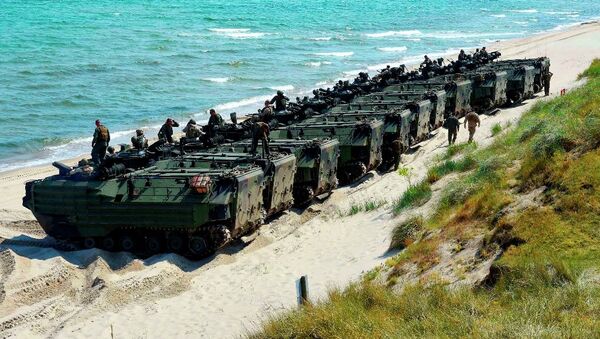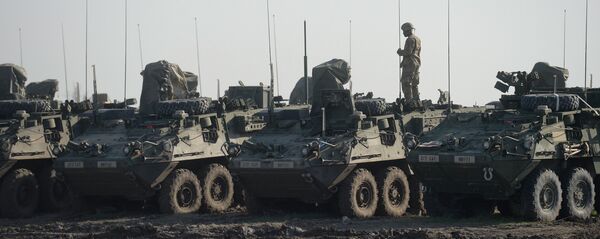The three military drills include the US-led Baltops 2016 maritime exercise that was launched last week and will last until June 26. Meanwhile Estonia, Latvia and Lithuania are taking part in the US-led Saber Strike drills scheduled for May 27 – June 22. The Anakonda 2016 exercise will run in Poland on June 7-17.
June continues to be a busy (but exciting!) month, with exercises #Anakonda16, #BALTOPS & #SaberStrike pic.twitter.com/YknfwaHEAE
— US Mission to NATO (@USNATO) 6 июня 2016 г.
Baltops 2016 is taking place in the area, where "no Russian military buildup is happening," Russian military expert Viktor Murakhovsky told the Vzglyad newspaper. "They are screaming about the Iskander [mobile short-range ballistic missile systems], etc. At the moment our missile brigade in the Kaliningrad Region has only Soviet-era Tochka-U [tactical ballistic missile systems]."
Approximately 6,100 troops from 17 countries along with 45 submarines and warships, including the USS Mount Whitney, and over 60 aircraft are taking part in one of the largest drills in northern Europe. The Baltops 2016 annual war-games have been held for more than four decades.
2 #LTU Naval ships attend EX #BALTOPS16 along with 50 warships, 61 aircraft, 6000 troops from 16 allies & partners pic.twitter.com/l24rzE8vhS
— Lithuanian_MoD (@Lithuanian_MoD) 3 июня 2016 г.
Participating nations comprise NATO members Belgium, Denmark, Estonia, France, Germany, Italy, Latvia, Lithuania, Netherlands, Norway, Poland, Portugal, Spain, the UK and the US, as well as the bloc's two partner countries, Finland and Sweden.
The drills' area of operations is huge. They will take place in Estonia, Finland, Germany, Poland, Sweden and throughout the Baltic Sea with the aim of reassuring Washington's allies and partners that the US and NATO are committed to protecting the region from any threat, particularly Russia.
Arrival of @USNavy 6th Fleet Flagship USS Mount Witney to #Tallinn #BALTOPS16 #AlliedStrong https://t.co/50C0zJY6zj pic.twitter.com/7ZUilAdrOa
— estNATO (@estNATO) 3 июня 2016 г.
This is not the message that makes Moscow happy. The Kremlin as well as Russian and foreign experts have repeatedly pointed out that Russia does not pose a threat to any of its neighbors or beyond and does not intent to challenge or alter the existing balance of power in Europe.
Military and political analyst Alexander Perendzhiev maintained that Baltops 2016 should be viewed as NATO's response to Russia's ability to protect itself. He also told the Vzglyad newspaper that the alliance is trying to drag Sweden and Finland into the bloc.
"They are creating an organizational base for these two countries to join NATO. This trend does not mean that Sweden and Finland will necessarily join the bloc, because it will not only be about solving their issues with NATO's help. They clearly understand that the alliance will try to solve its problems at their expense," he noted.




